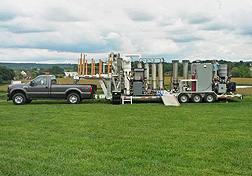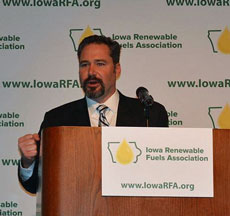 Petroleum refiner Tesoro Corporation plans to develop biocrude made from renewable biomass. This news release from the Texas-based company says the biocrude can be co-processed in its existing refineries, along with traditional crude oil.
Petroleum refiner Tesoro Corporation plans to develop biocrude made from renewable biomass. This news release from the Texas-based company says the biocrude can be co-processed in its existing refineries, along with traditional crude oil.
Converting renewable biomass into biocrude is expected to enable existing refining assets to produce less carbon-intensive fuels at a significantly lower capital and operating cost than competing technologies. This approach could lower Tesoro’s compliance costs with the federal renewable fuel standard and California’s low carbon fuel standard by generating credits, while producing less carbon-intensive fuels which are fully compatible with the nation’s existing fuel infrastructure as well as current vehicle fleet warranties.
In order to support the development of biocrude, Tesoro is working collaboratively with several renewable energy companies to advance biomass-to-fuels technology, including:
– Fulcrum BioEnergy, Inc.: Fulcrum plans to supply biocrude produced from municipal solid waste to Tesoro Refining & Marketing Company LLC (“TRMC”) to process as a feedstock at its Martinez, California Refinery. An estimated 800 barrels of biocrude per day will be produced at Fulcrum’s Sierra BioFuels Plant in Reno, Nevada, which is expected to be operational in early 2018.
– Virent, Inc.: Tesoro and Virent are working to establish a strategic relationship to support scale-up and commercialization of Virent’s BioForming technology which produces low-carbon, biofuel and chemicals.
– Ensyn Corporation: Ensyn has applied for a pathway with the California Air Resources Board to co-process its biocrude, produced from tree residue – called Renewable Fuel Oil(TM) – in TRMC’s California refineries.
“We’ve established relationships such as those with Fulcrum, Virent, and Ensyn, to progress technologies which would enable our existing fuel manufacturing infrastructure to help meet the demand for low-carbon, advanced biofuels. Working with these companies, Tesoro seeks to create shared value that will benefit our communities, consumers and the environment, while allowing us to supply biofuels at a competitive price,” says CJ Warner, Executive Vice President of Strategy and Business Development at Tesoro.










